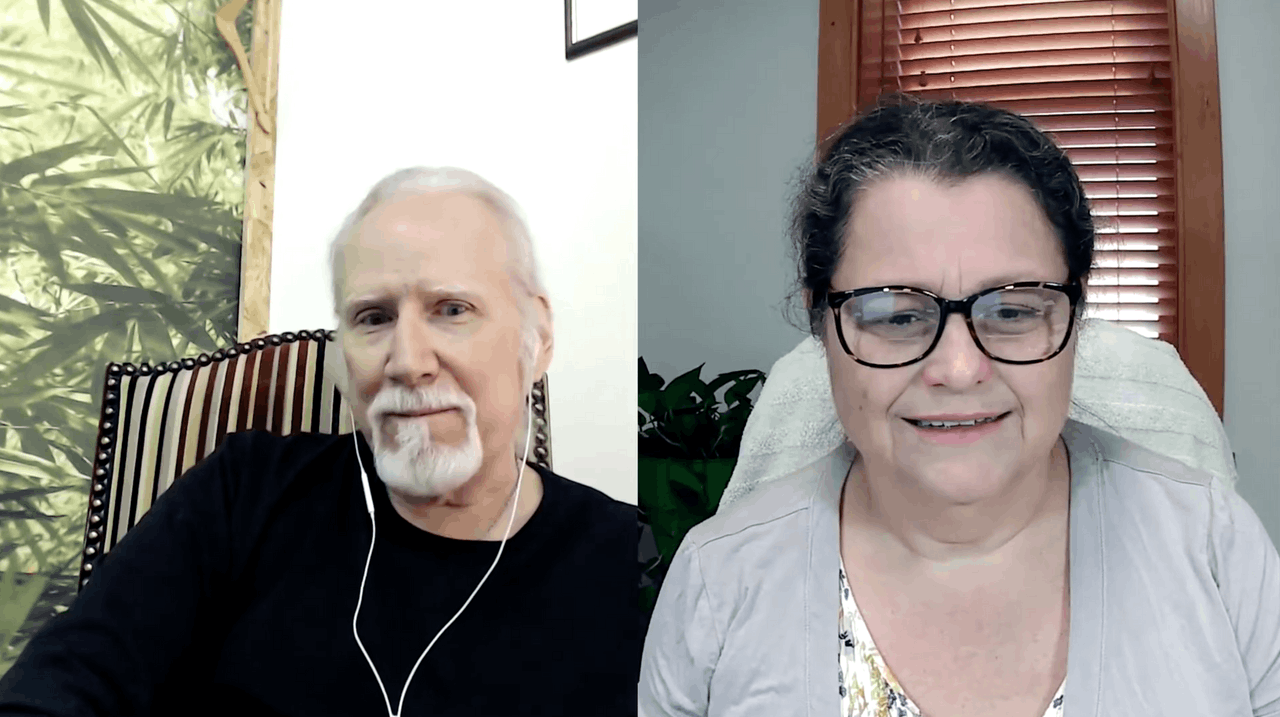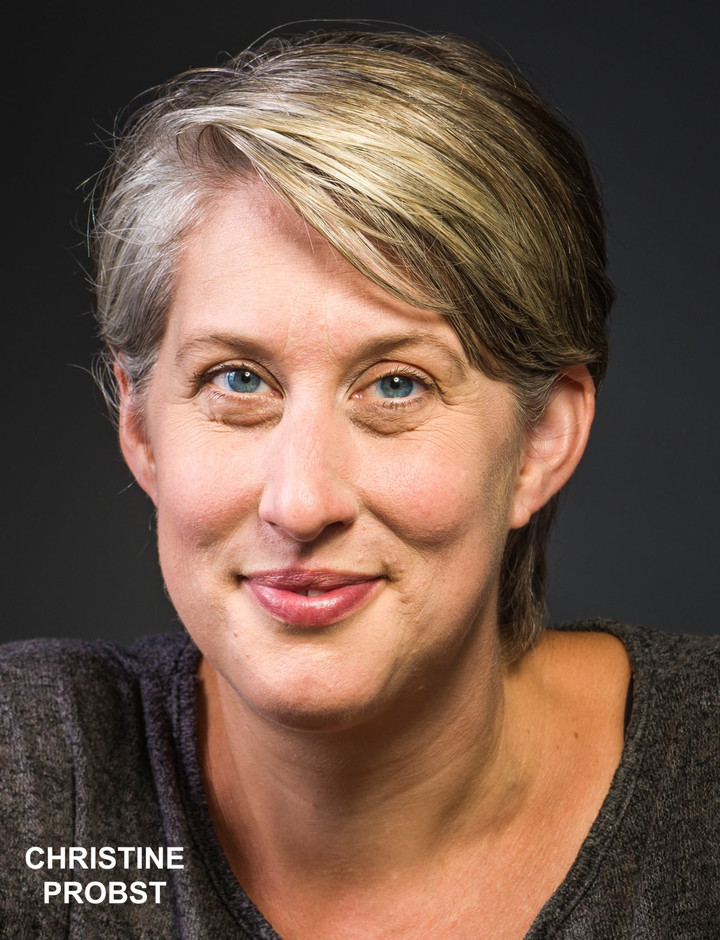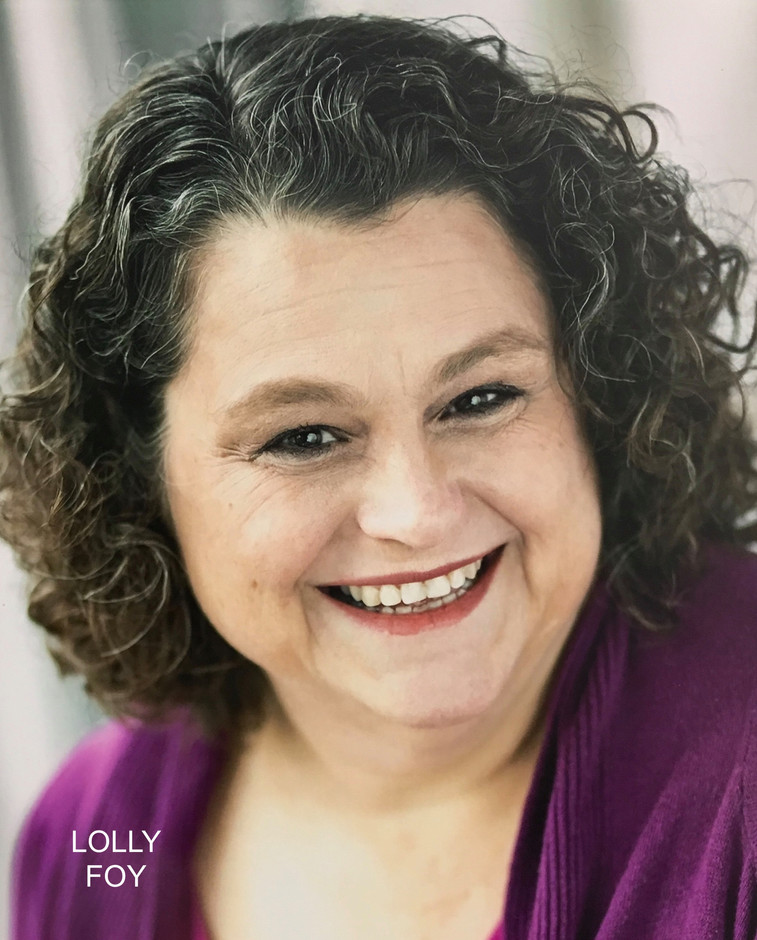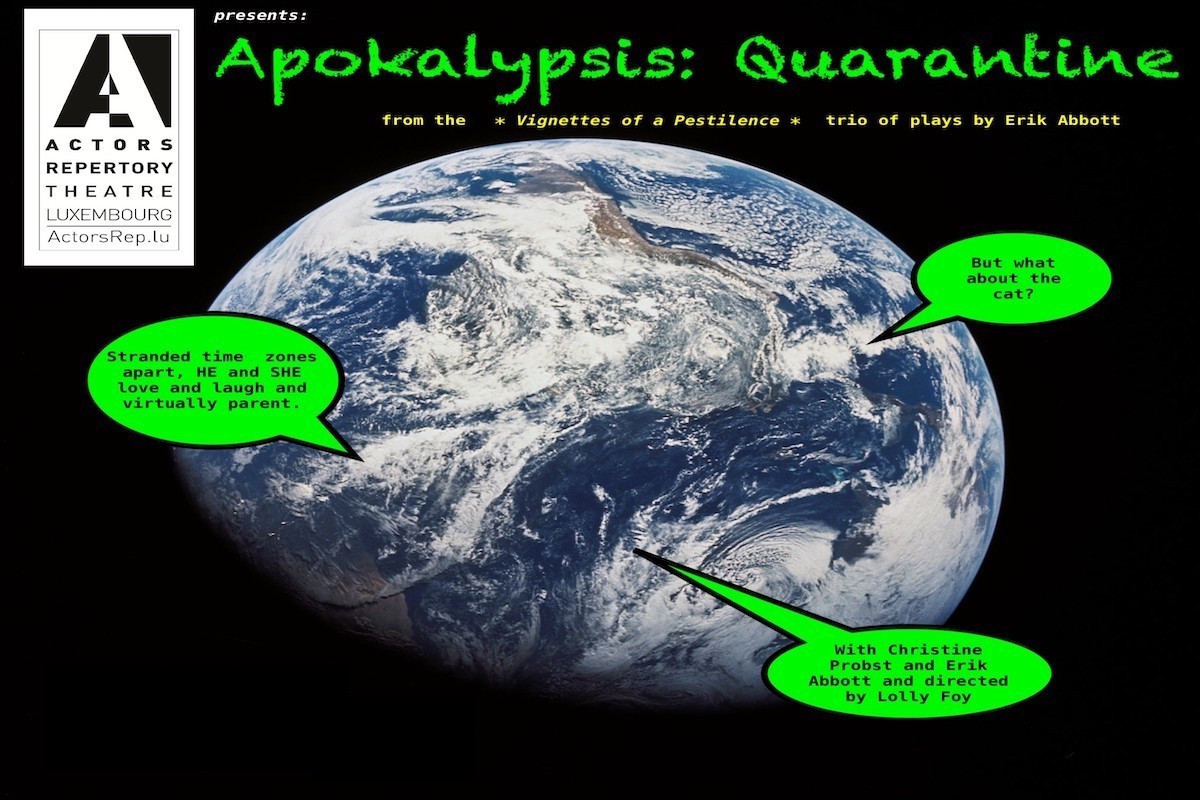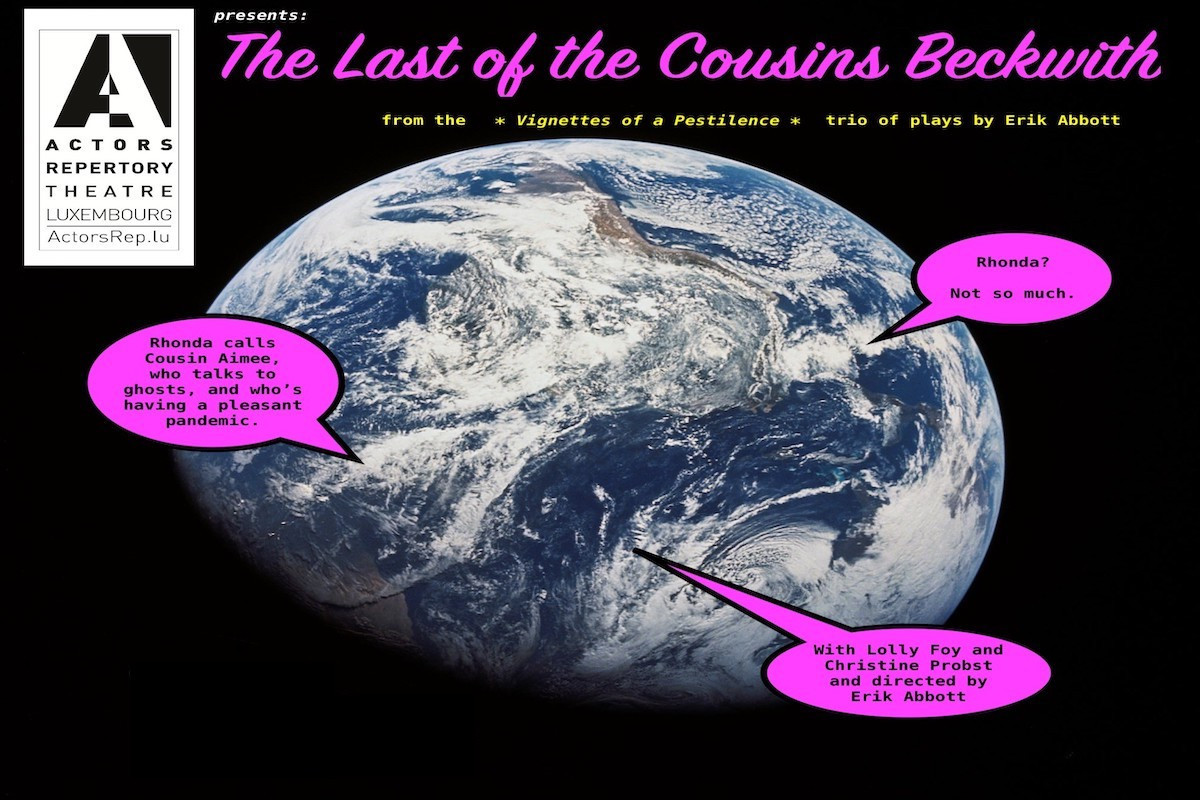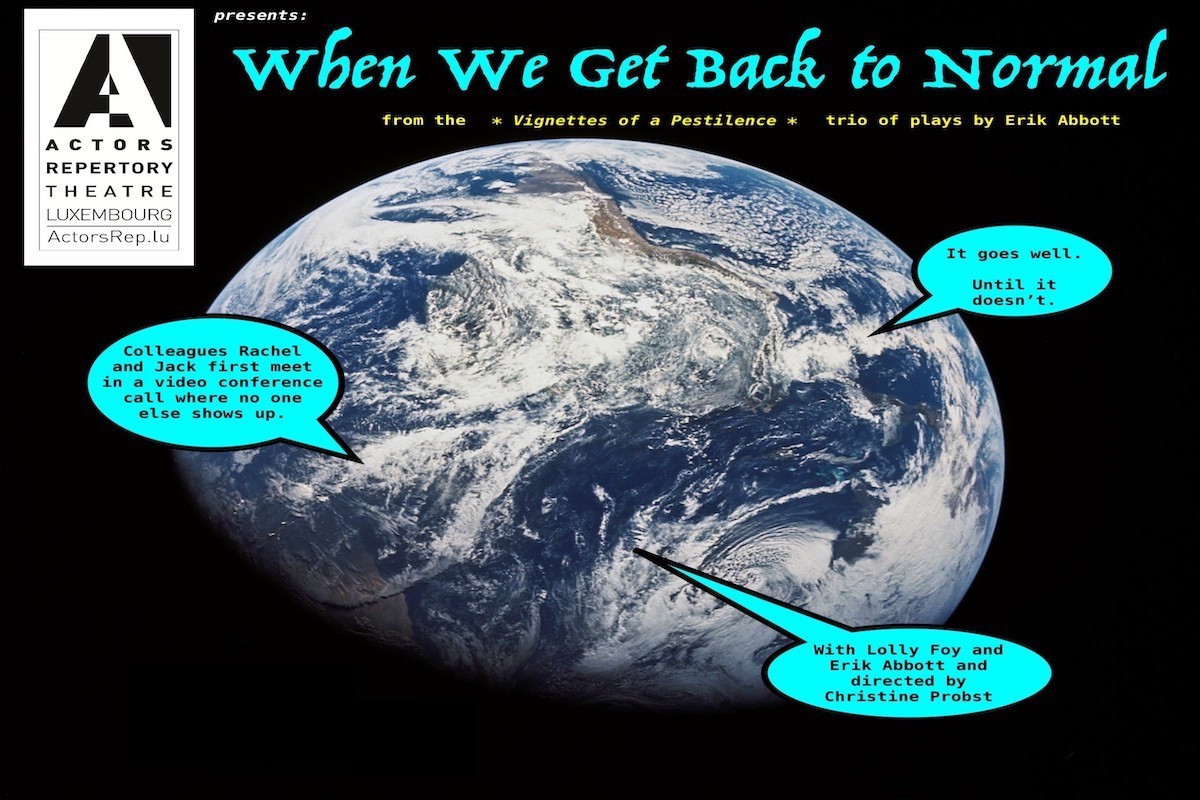With humour and hope, Vignettes of a Pestilence confronts the emotional peaks and valleys of pandemic life, as well as the triumphs of love and laughter, says artistic director, actor and playwright Abbott. Three stories reflect separate experiences in the context of the pandemic. Set in the spring and autumn of 2020 and spring of 2021, they capture familiar thoughts and circumstances and are conveyed via six characters, and supposedly a cat.
In each of the plays, the plot reveals two characters in video conversations -- a husband (He) and wife (She) separated by grounded flights in Apokalypsis: Quarantine, two cousins (Rhonda and Aimee) from an eccentric family in The last of the cousins Beckwith, and co-workers meeting for the first time as sole attendees of an online meeting in When we get back to normal.
The trio of plays by English-language theatre company Actors Repertory Theatre Luxembourg (Actors Rep) has been selected for screening online in two international festivals including the Minnesota Fringe Festival (5 to 15 August 2021) and the Edinburgh Festival Fringe (6 to 30 August 2021). It is also scheduled to be shown at the Festival des Égarés (Théâtre Luxembourg – Le LabO Théâtre Differdange) on 28 August.
Meet the co-directors and actors
The trio of theatre aficionados not only took turns in playing the characters of the plays but also in directing. An experience described as “the most challenging aspect” by Probst, who wore the director hat for When we get back to normal and featured as She and Rhonda in the other two plays.
Foy played the role of Aimee and Rachel and was the director for Apokalypsis: Quarantine. Actors Rep artistic director Erik Abbott wrote all three plays, appearing as He and Jack in two of them and directing The Last of the Cousins Beckwith.
All three actors and co-directors have extensive professional careers in theatre. Philip Taylor, founder and CEO of Morpheus Marketing was the technical consultant and video editor.
A peculiar digital production experience
With all three actors and co-directors based in three different countries--Luxembourg, the US and France-- Abbott says Foy generously got up “pre-dawn a couple of time for rehearsals”, and even rehearsed once in a McDonalds carpark somewhere in North Carolina.
The unique rehearsal experience spanned about a month on Zoom, and despite the technicalities involved, all three described the experience as fun, thanks, in part, to a decades-long working relationship with both Foy and Probst, Abbott says.
The production experience with both co-actors brought in a new dimension with interpretations and layers of the scripts unveiled in the shooting process that made it even more interesting, Abbot says. As a writer, he says he loves working with good actors for this reason and enjoyed both directing, writing and playing the two characters.
Foy adds that a “silver lining” from the experience was the sudden awareness of possibilities. She explains that “before the Zoom era and remote work, it would never have occurred to collaborate online… a true gift of the pandemic.” For her, the characters Aimee and Rachel--which she describes as being on the edge of two spectrums of her personality--were a delight to play especially because of the “odd” but exciting way Aimee conveys her thoughts and the challenges of playing Racheal, a character she is “more proud of”.
Thanks to the format of the play “you don’t feel like you’re watching a performance of the plays but actually participating in the moment,” adds Probst, “kind of like the person who doesn’t say anything in a meeting but hanging out and observing.”
While she normally cringes at live-streamed performances of theatre pieces, she notes that a peculiar characteristic of the vignettes is that it was particularly written and made for the online format, but can also be adapted for staged performances. For Probst, the character She was already familiar (She and He appear in the Christmas play Dear Santa, presented in multiple locations by Actors Rep in 2017 and 2018). Rhonda on the other hand was more satisfying as the performance touched on some real truths about her moods during the pandemic, Probst says.
The future: digital productions, inspiration and whats to come
“It is clear that digital is part of the theatre world now,” Abbott says, and although the idea was to write a piece ideal for stage and online, he admits that at the onset, he wasn’t sure what the parameters would be for online.
With vast experience in theatre and other kinds of writing, he was inspired by other digital productions that began to surface following the pandemic, as well as 17th century British comedy and the existing characters He and She from the Christmas play. “What would they be doing in quarantine?!” he says. Other ideas for the remaining two plays were drafted in the course of six to eight months.
Probst highlights the waves of opportunities in the world of theatre and flexibility shown by festivals which now have online screenings in addition to in-person experiences. This is aside from the “opportunities that have opened up for actors all over the world, to be seen in ways they wouldn’t have been and establish collaborations beyond borders.” And although she anticipates the situation may change as theatres open, she explains that digital theatre in some form will always be there.
Besides the upcoming festivals, Abbott thinks the trio of plays could also be screened later in the year for a small fee in Luxembourg City and could go on to feature in other festivals.
The main massage of hope runs throughout the plays, “because this is what keeps us going,” Abbot says. They are also a prime example of plays that will last through posterity and in twenty or thirty years could give future viewers a sneak peak into the real emotions and human desires of the current time and how we got through it, Probst adds. They will serve as a reminder that “there is a third dose and light at the end of the tunnel.”
